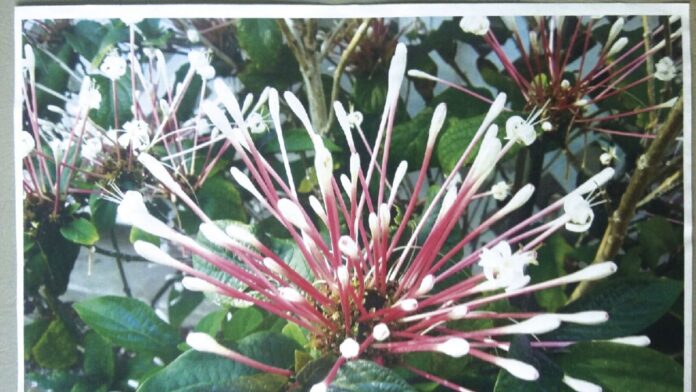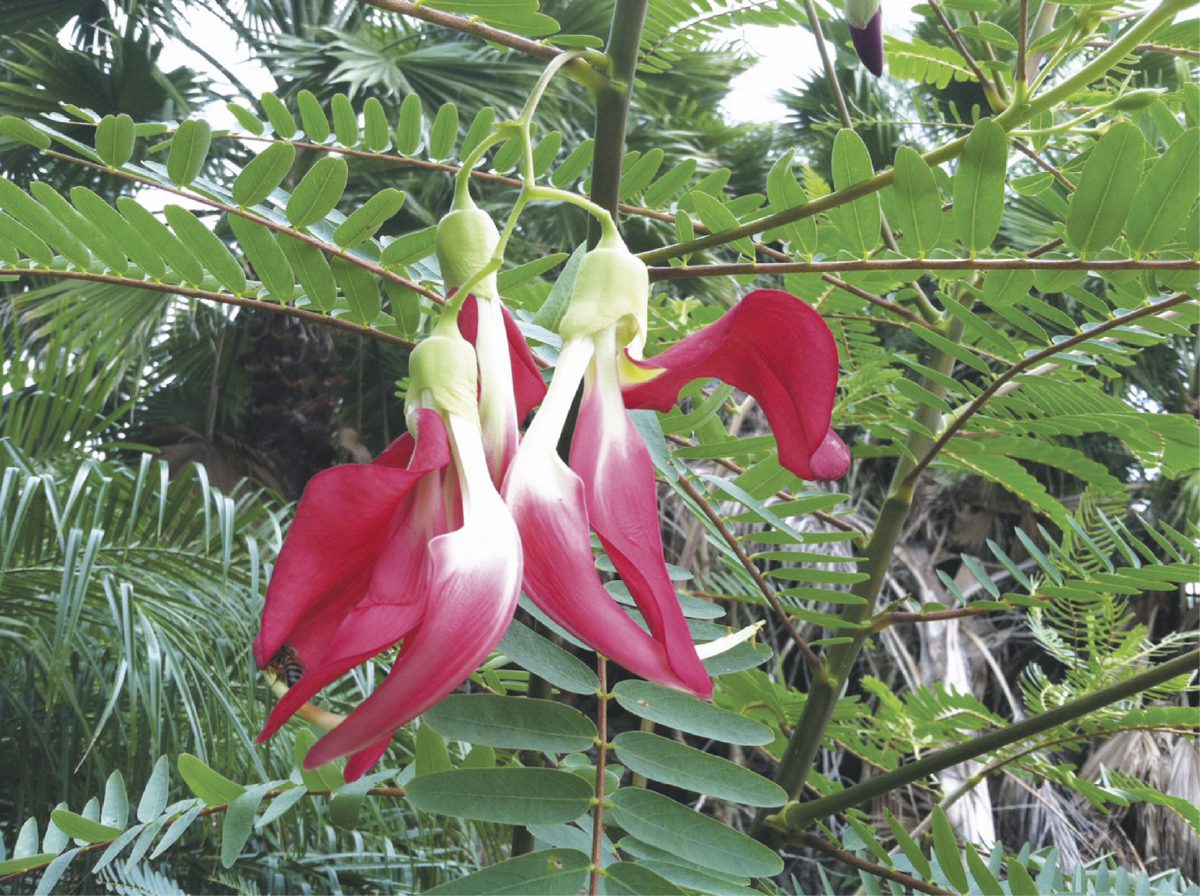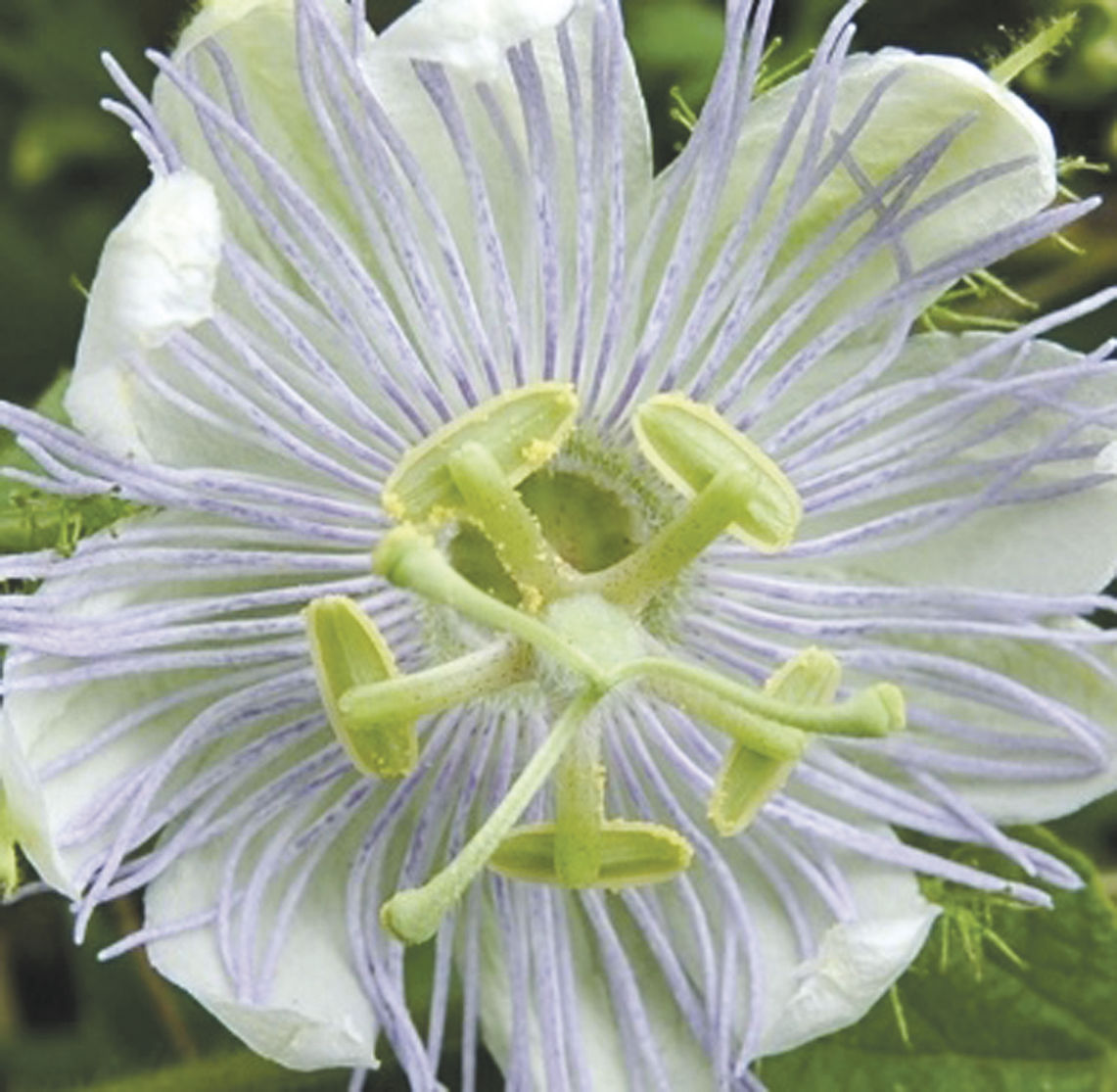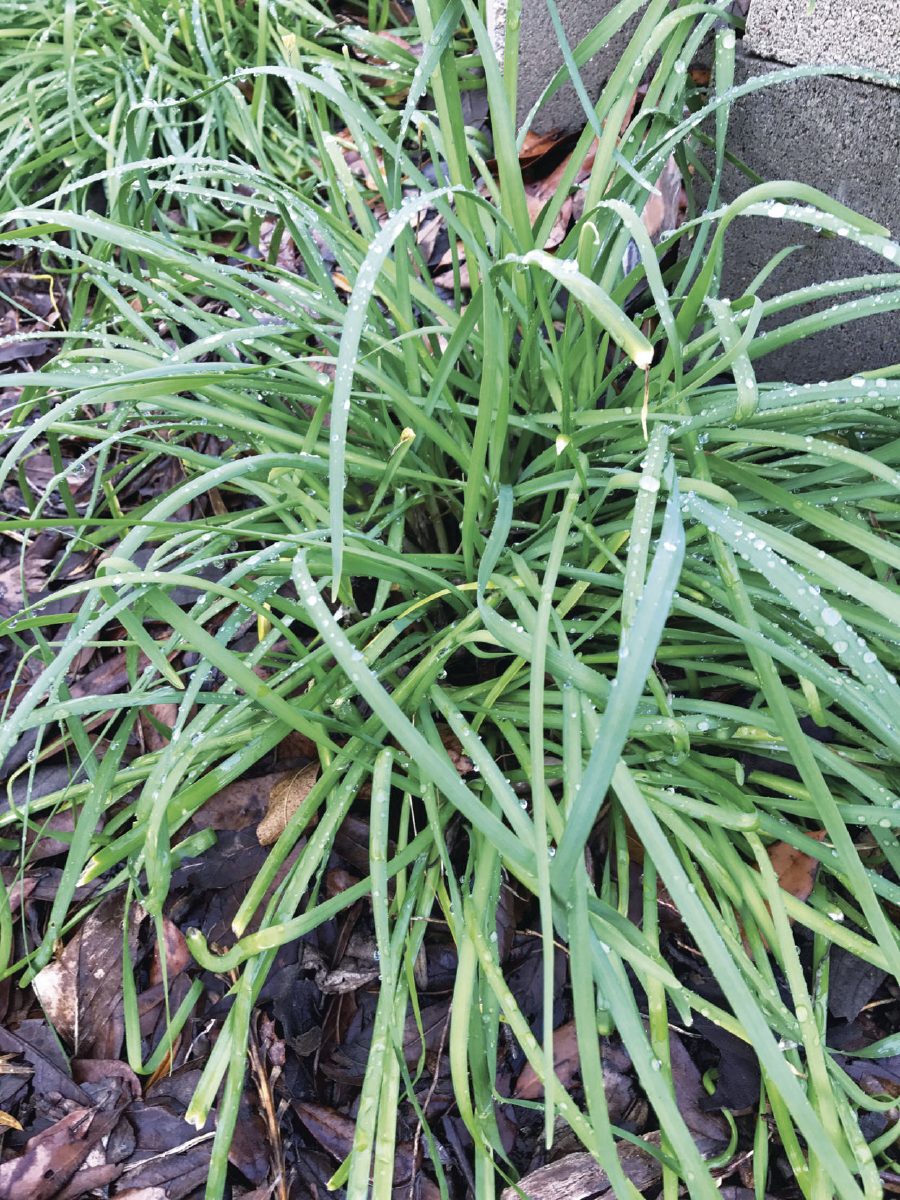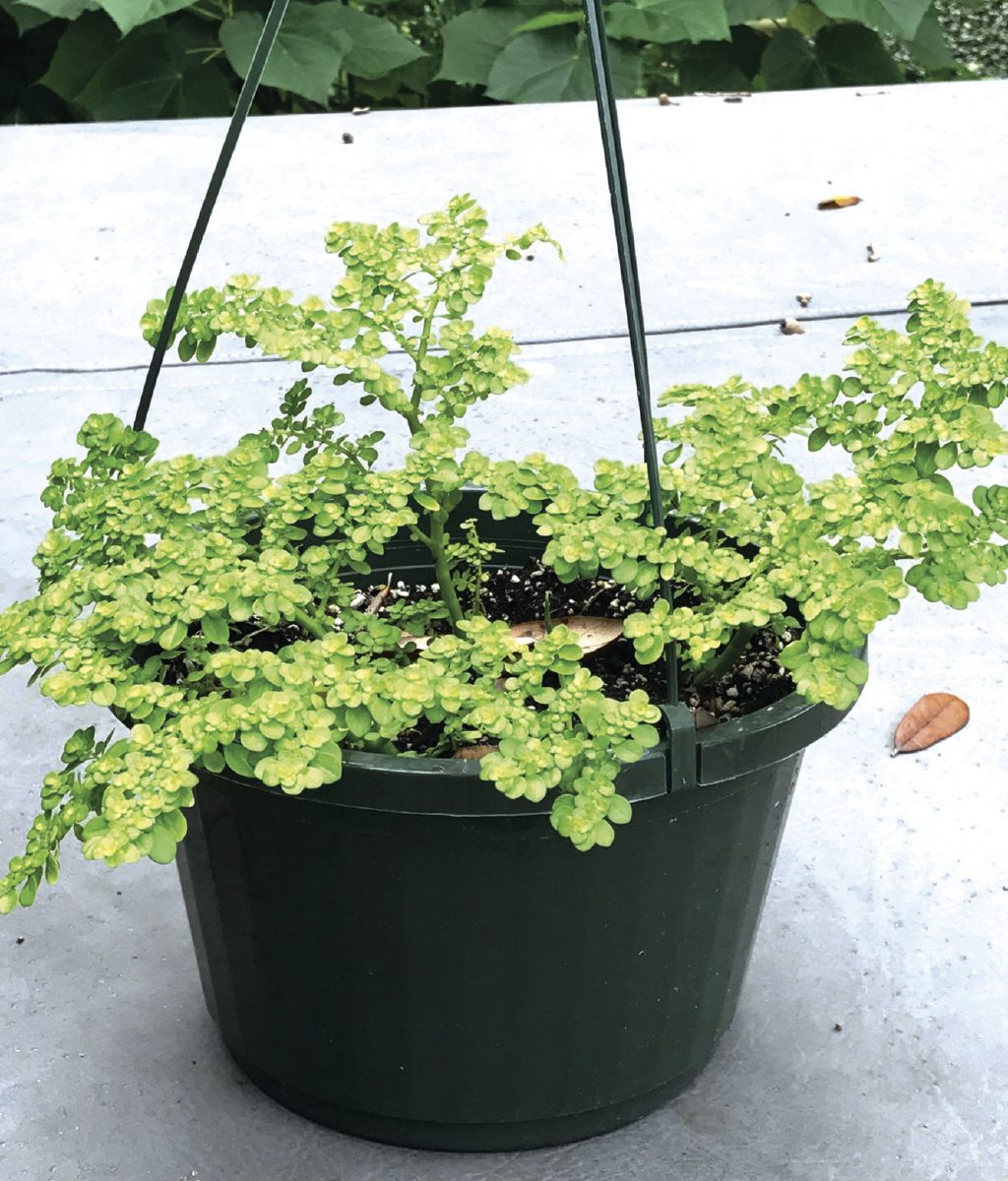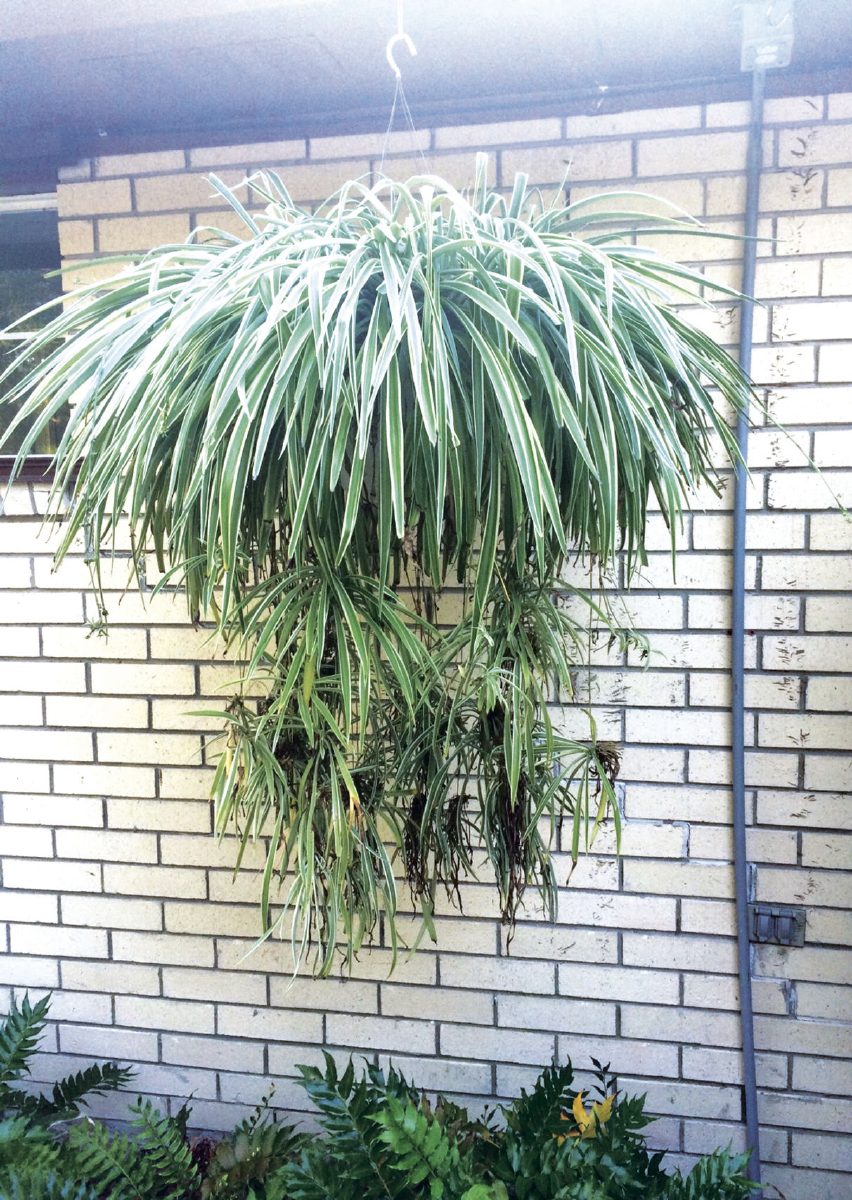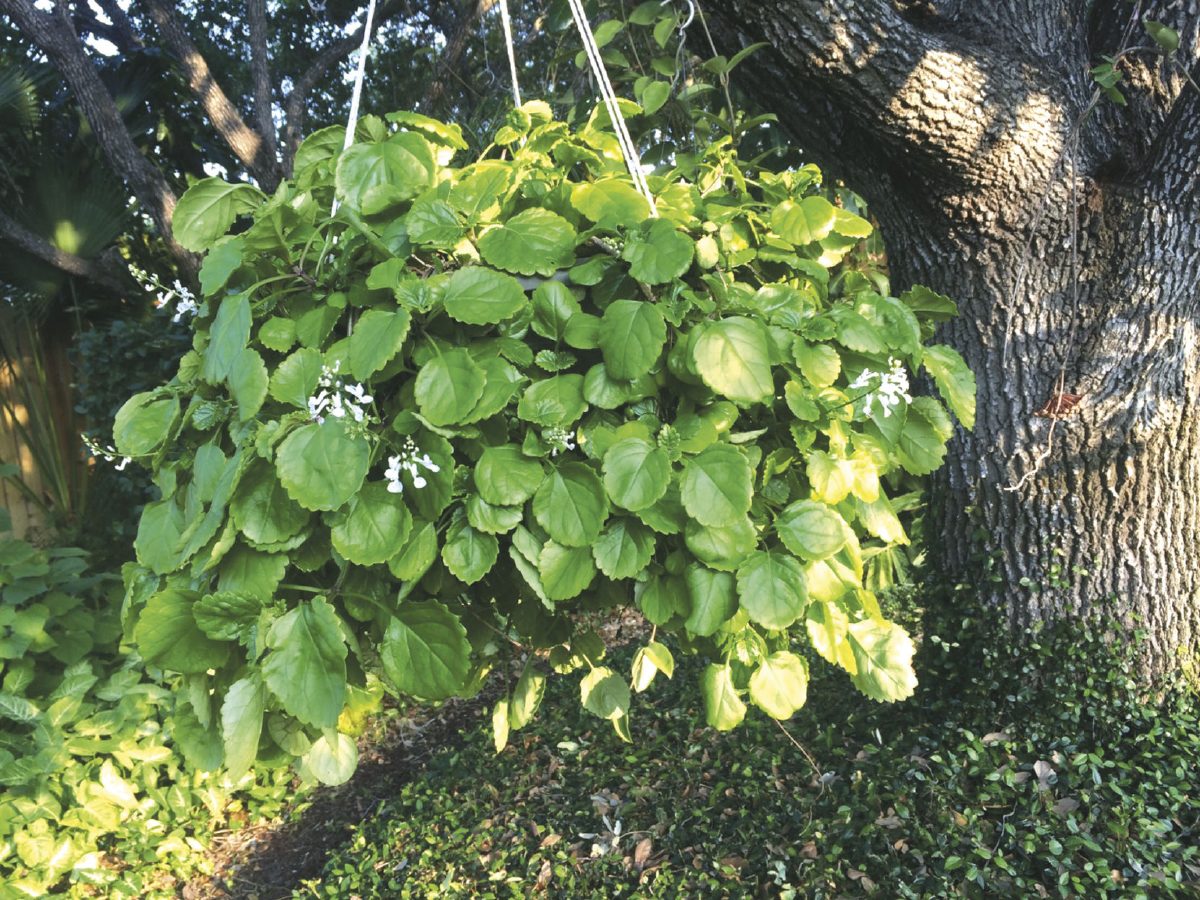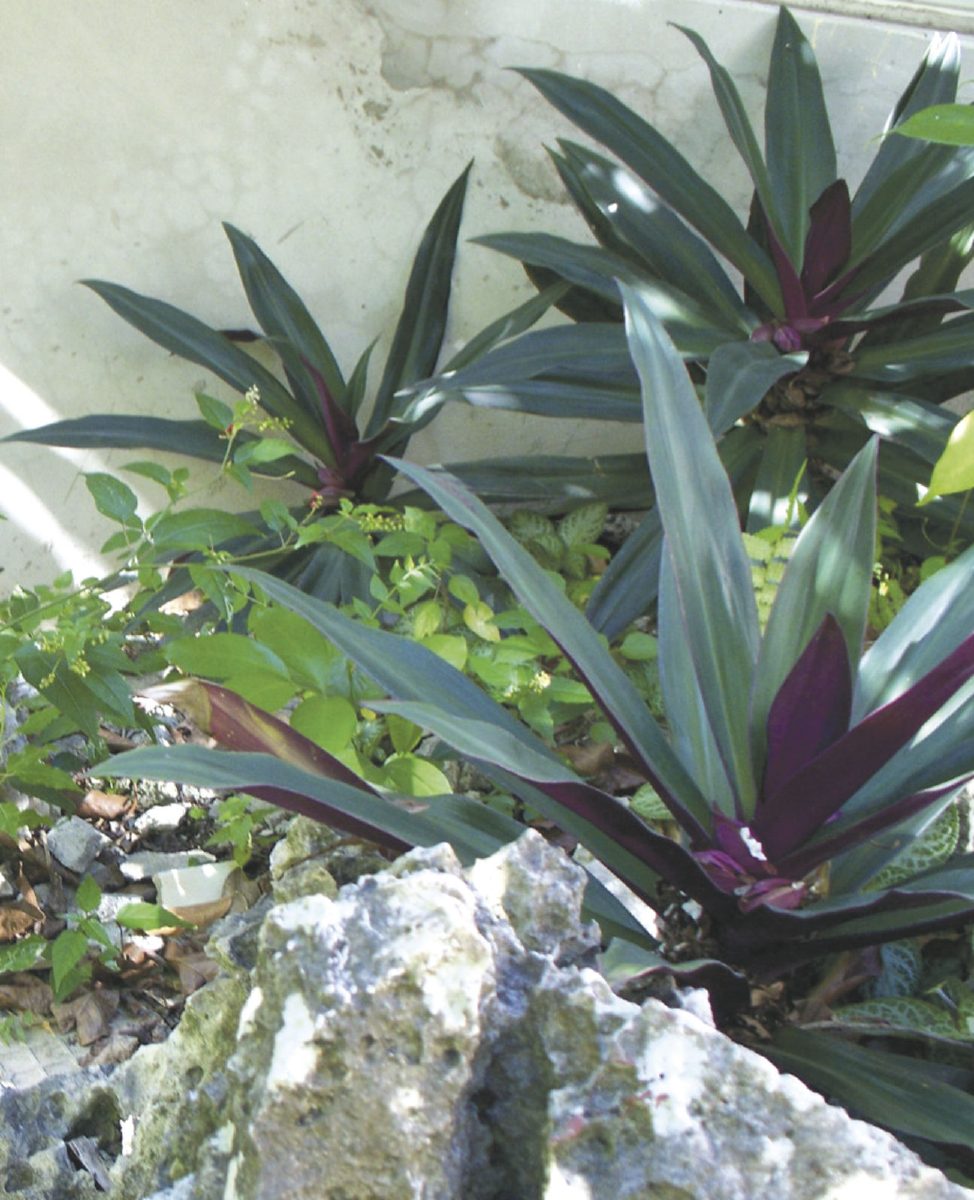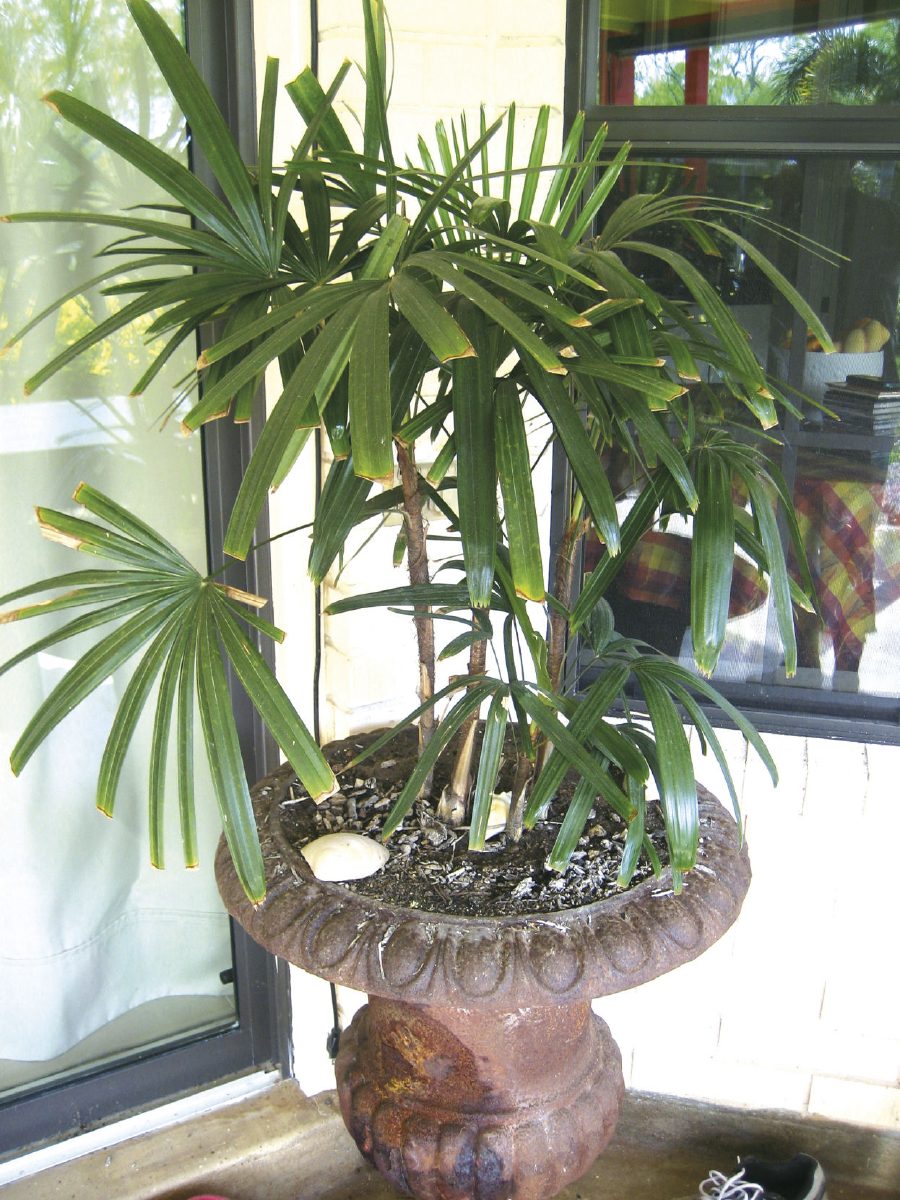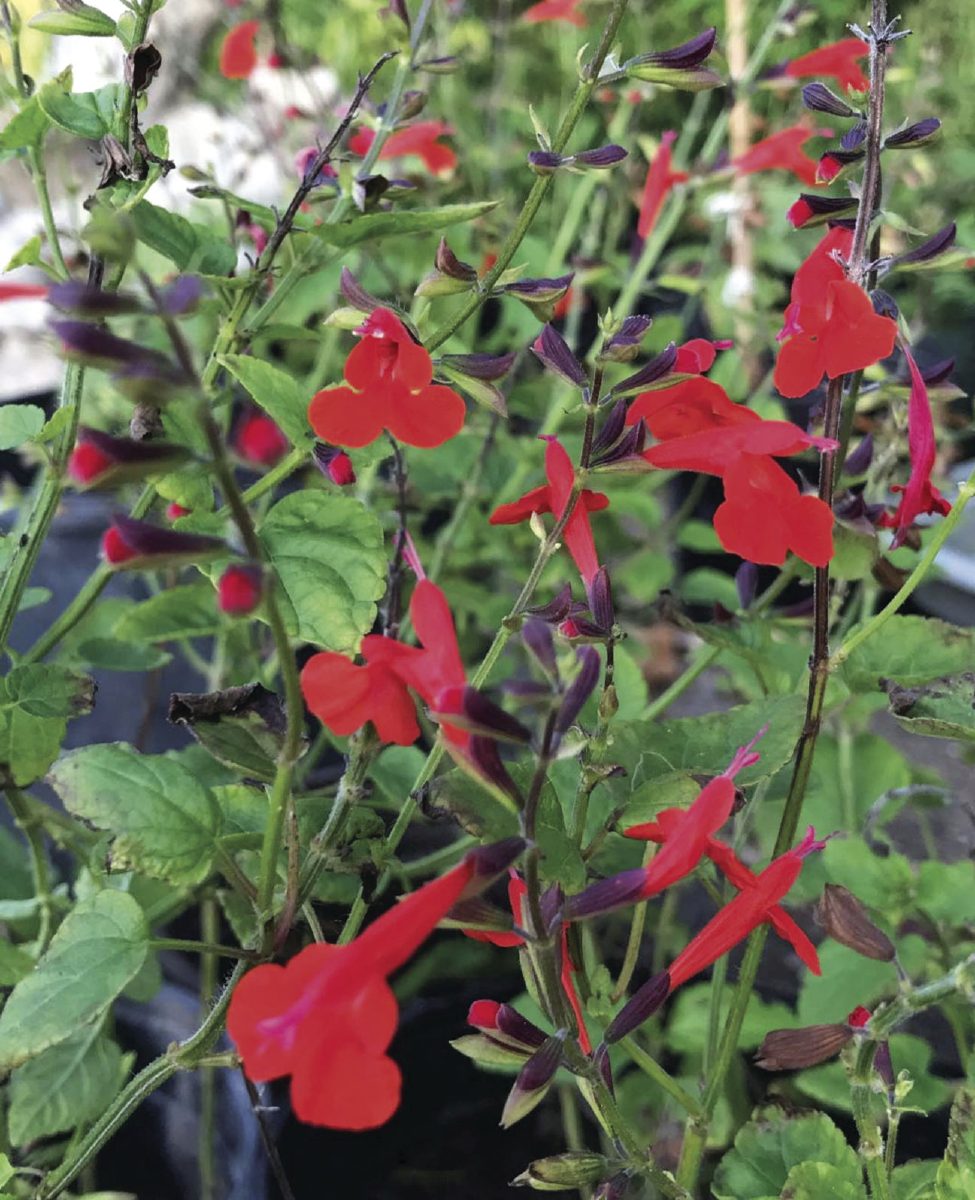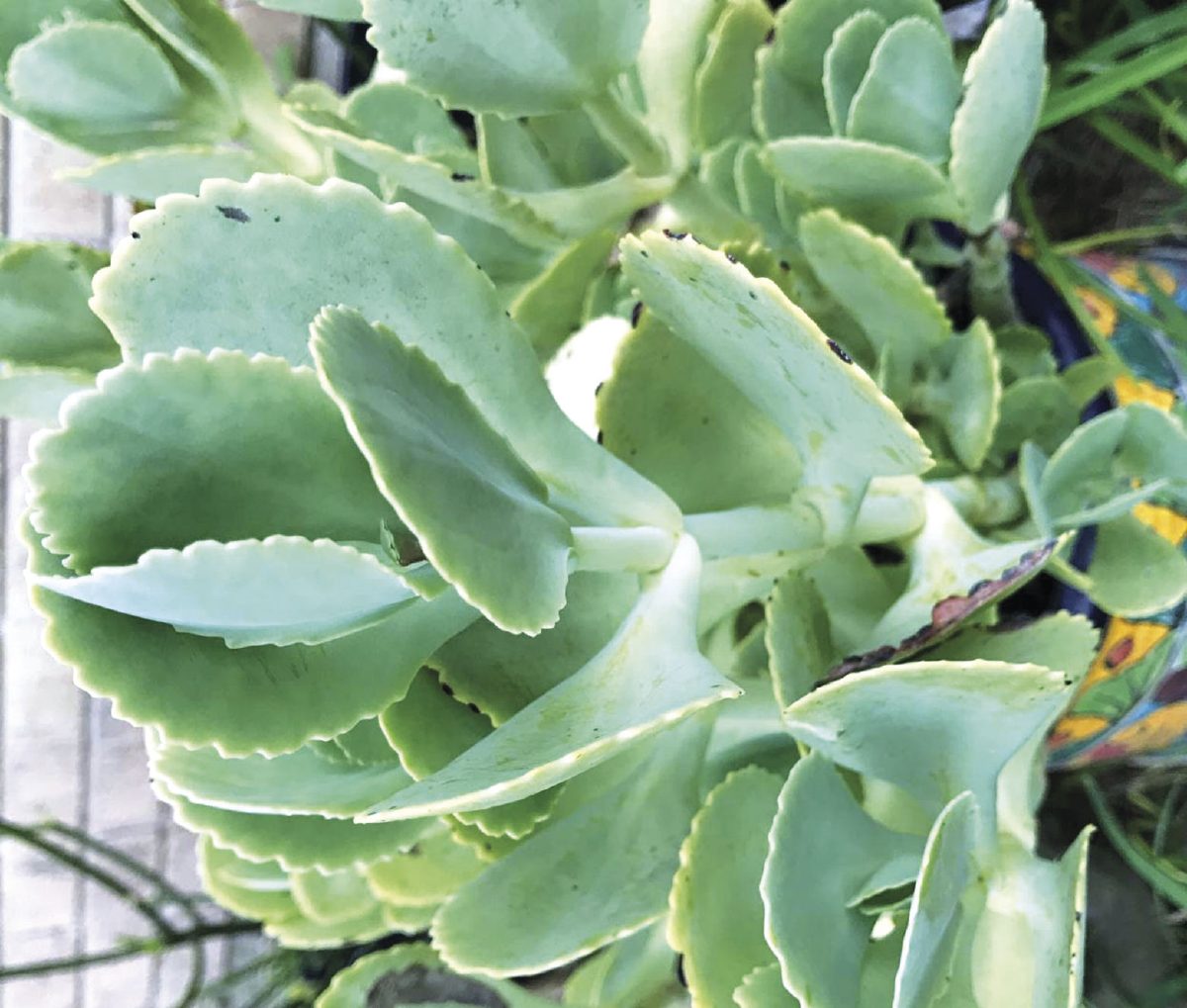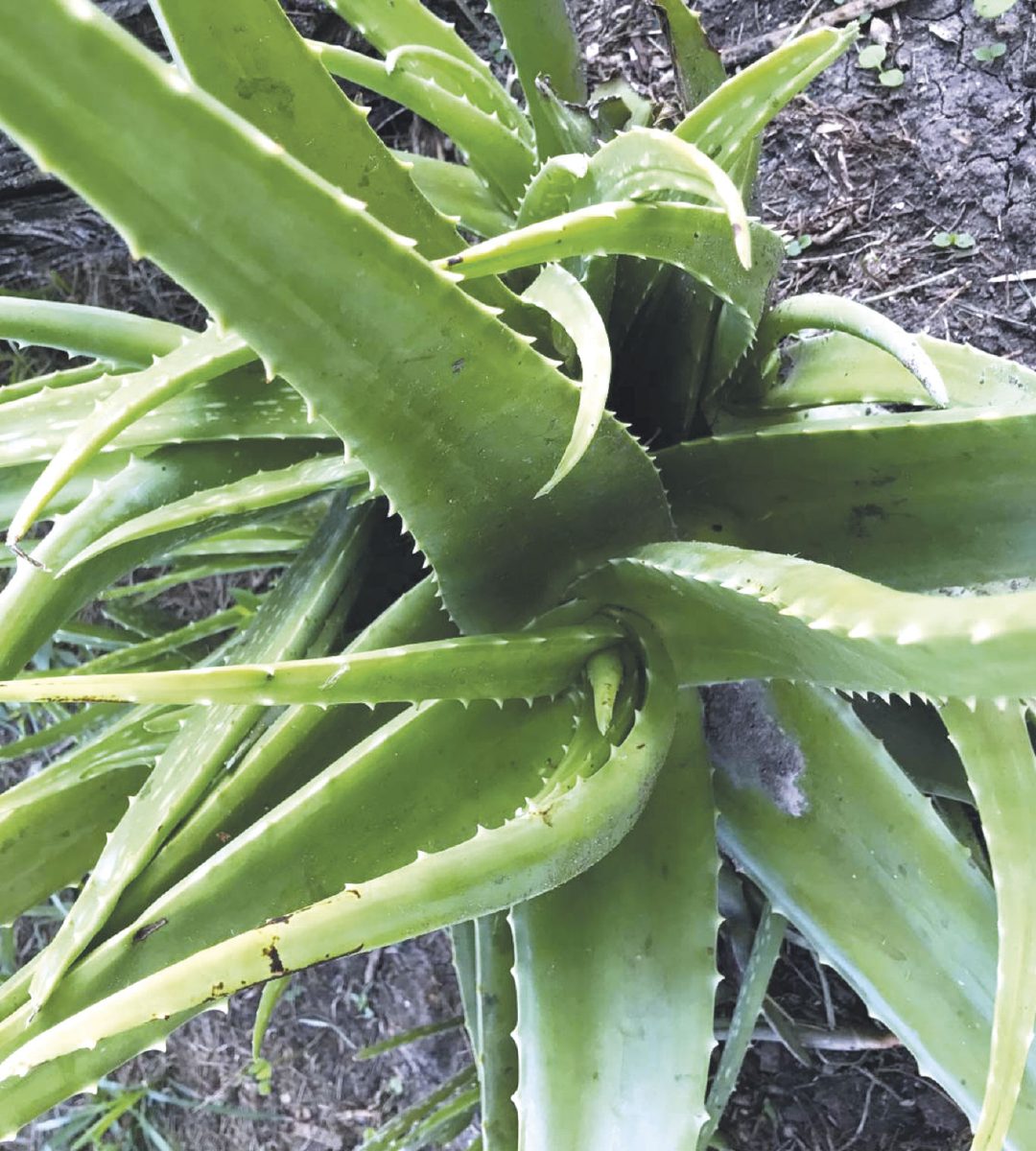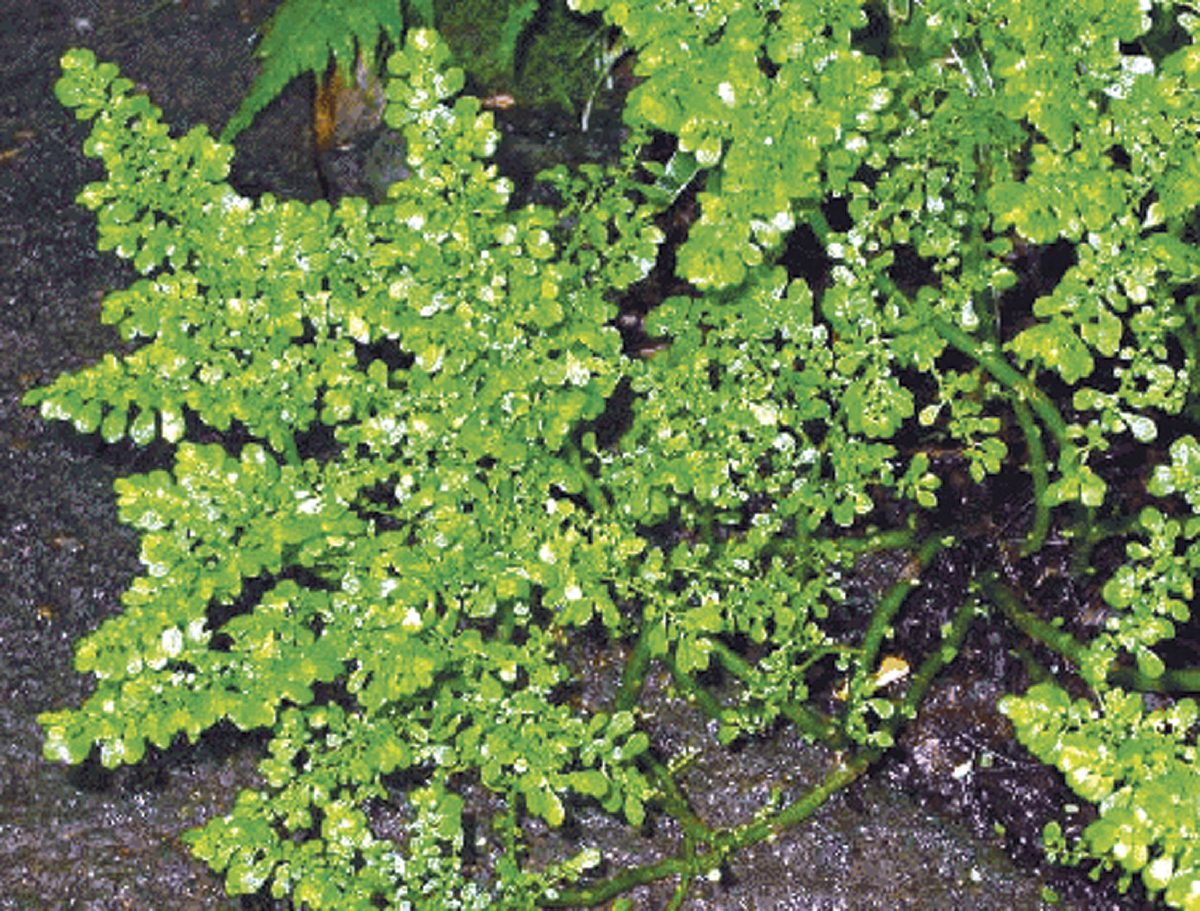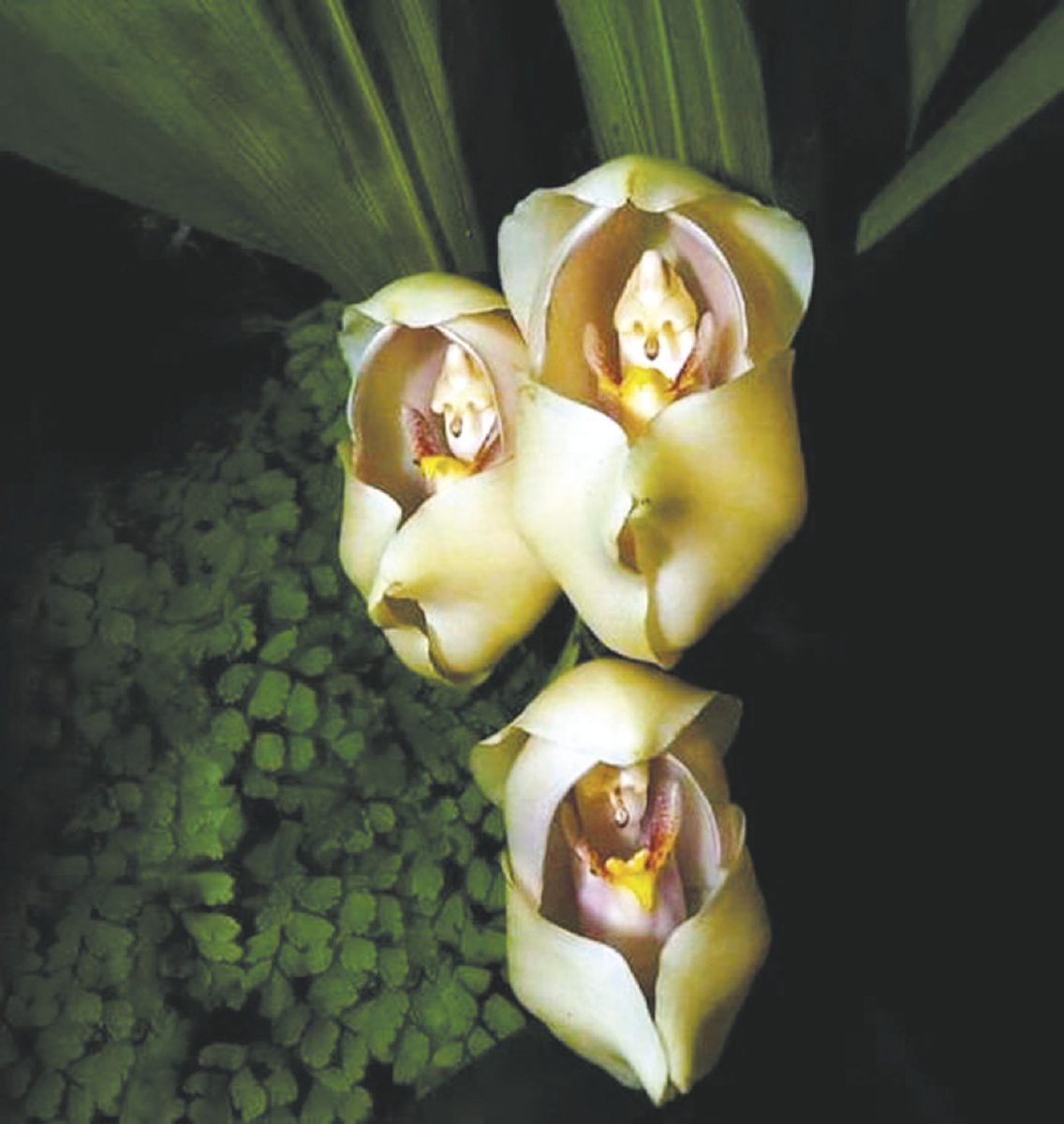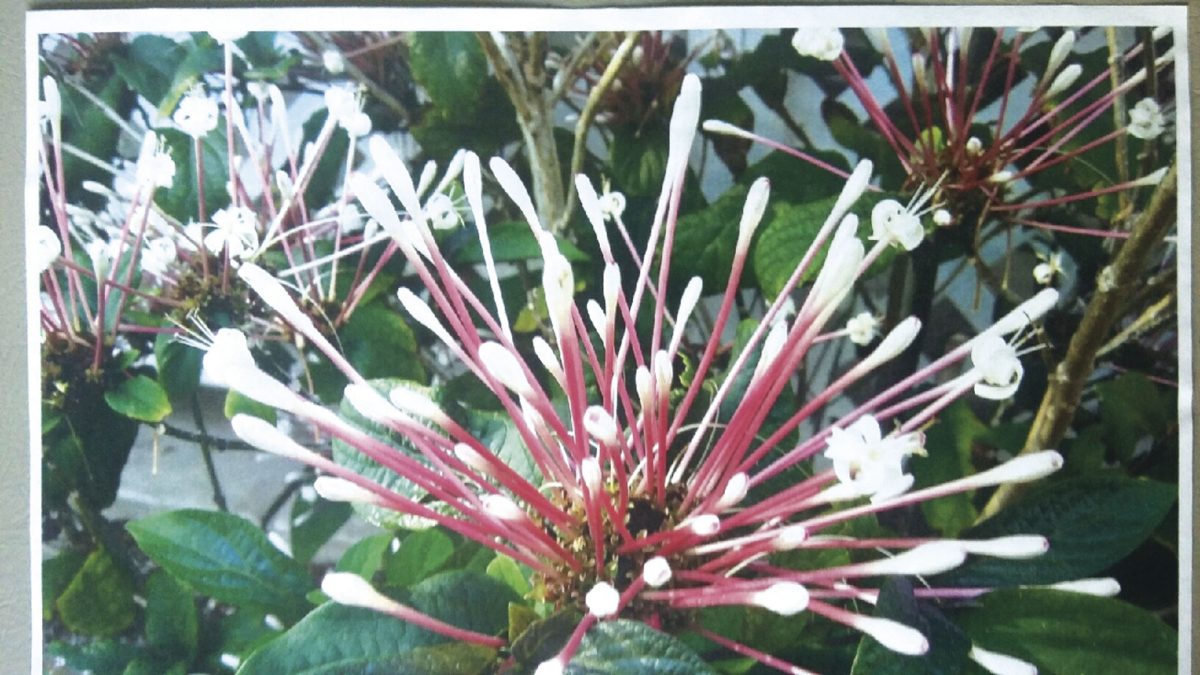BY Lori Murray s
ARTILLERY FERN
Artillery Plants (Pilea sertyllacea) are a low-growing interesting option for both outdoor beds and hanging baskets. They make a fine-textured green foliage for containers as well. If you plant them outside, put them in a sheltered area that you can protect as you would a succulent if the weather turns cold. As an indoor plant, give it filtered light but not direct sunlight. Although directions say to plant in shade to part shade, mine take the sun very well. They need good moisture but don’t let them sit in water. Cuttings root easily.
HUMMINGBIRD TREE
Hummingbird Tree (Sesbania grandiflora) a fast growing showpiece, the hummingbird tree is spectacular when its 3.5″ red blooms open. The flowers look like a hummingbird in flight and form long bean pods. Tropical in nature, it likes alkaline soil and lots of water. Great in the RGV. Not cold hardy. Most at 6’ tall in 5 gallon pots.
CHRIST IN THE CRADLE
Christ in the cradle (Tradescantia spathacea) is also called Moses in the cradle or boatlily because of the interesting, cradle-like struc-tures that enclose its flowers. A native of Central America, the plant is a tender perennial suitable for outdoor culture year round in U.S. It has attractive, mixed color leaves and is useful as a bedding or accent plant, or in hanging baskets outdoors. Christ in the cradle may be brought indoors to over-winter, since it also does well as a container-grown houseplant. It is a tough, adaptable plant that grows well under many light conditions, from full sun to partial shade. Exercise care to avoid contact with the sap released from cut leaves, since this may cause stinging or skin irritation. (www.sfgate.com)
CLERODENDRUM
Clerodendrum is known by different names – fireworks, shooting star, starburst bush. It is not a demanding plant and grows great anywhere! I grow mine on the south side and enjoy late winter, early spring blooms. The flower, about 6 – 8 inches in diameter, attracts bees and butterflies.
GARLIC CHIVES
It looks like an onion chive but tastes more like garlic and has a flat, blue-green blade. Its flavor is more garlicky than oniony, though not as strong or harsh as a raw clove of real garlic. Snip the leaves just as you would chives, as a seasoning and as a garnish. They are often called Chinese chives or Chinese leeks. Its scientific name of Allium tuberosum is indicative of its oniony roots and falls among the family Liliaceae.
The flowers, large white star-shaped florets, themselves are another great reason to grow garlic chives. Because they act as an insect repellent they make an excellent companion plant for vegetables. Garlic chives are a nutrient-dense food. This means they are low in calories but high in beneficial nutrients like vitamins, minerals and antioxidants.
HANGING BASKETS
Hanging baskets of artillery fern, airplane plant, and Swedish Ivy will over-winter beautifully and give you a head start in the spring. Move inside only if cold weather occurs. All three provide their own cuttings for more baskets of the same kind.
ALOE VERA
Popular ornamental succulent. Plant in the ground or pots. Easily self-propagates with “pups” at sides of mother plant. Likes partial shade. Orange/yellow blooms on tall stalks attract hummingbirds.
CORONA DE CRISTO
Corona de Cristo (Passiflora foetida) delicate and exotic looking, this native perennial passion vine is remarkably tough. Twines on fence or trellis. Likes sun or partial shade, any soil. Host plant to Heliconia and Fritillary butterflies.
SCARLET SAGE
Scarlet Sage, (Salvia coccinea), is a must-have native plant for blooms during all seasons. Great nectar plant for hummingbirds and butterflies. Readily self-propagates, tolerates clay soil; grows in full sun or partial shade. Drought tolerant.
SUCCULENT
Easy to grow in any free-draining, gritty compost. Suitable for growing outdoors in the ground or a pot. Will colonize fairly rapidly. Native to Southern Africa but cultivated in warm climates world-wide.
LADY PALM
Lady Palm, (Rhapis excelsa), perhaps this palm should be named “Iron Lady Palm” because it can grow and even thrive in situations most gardeners would consider palm abuse. It is such an easy plant to grow and maintain! Lady Palm grows best in at least half shade. It can tolerate morning direct sun, but leaf burn and insect attack may occur with overexposure. But don’t worry about planting where it receives only indirect light; it will continue to grow, just more slowly. Lady Palm needs regular water to look attractive and thrive but can take a period of drought. Supplement natural water if planted under an overhanging roof or porch where it receives no rainwater.
TROPICAL MILKWEED
Tropical milkweed, (Asclepias currassavica), a top plant for monarch egg laying! Favorite source of nectar during migration. Cutting back to the ground in fall encourages monarchs to finish their fall migration. Staggering cuttings (cut back half now, the other half a few weeks later) ensures availability for unexpected monarch visitors.

